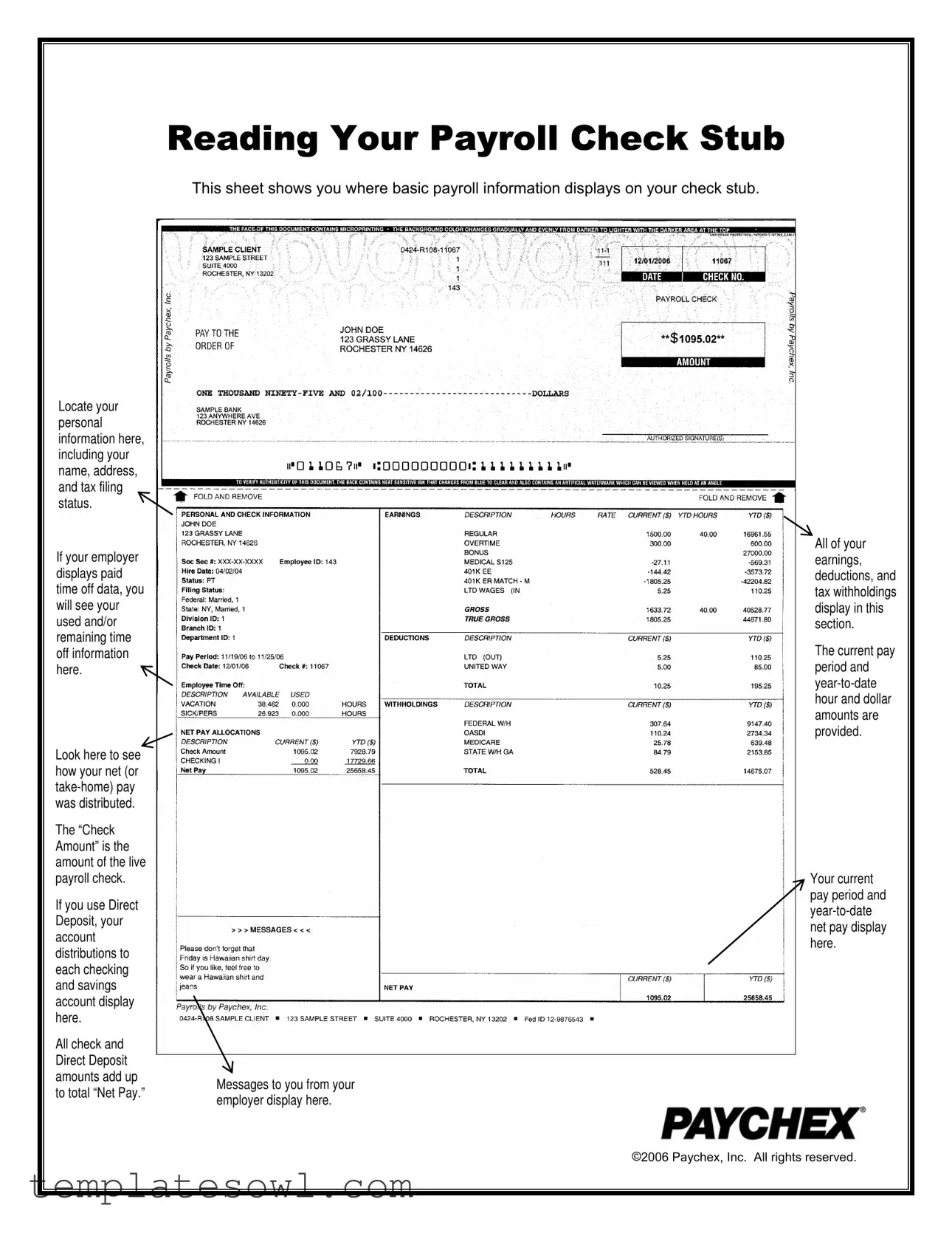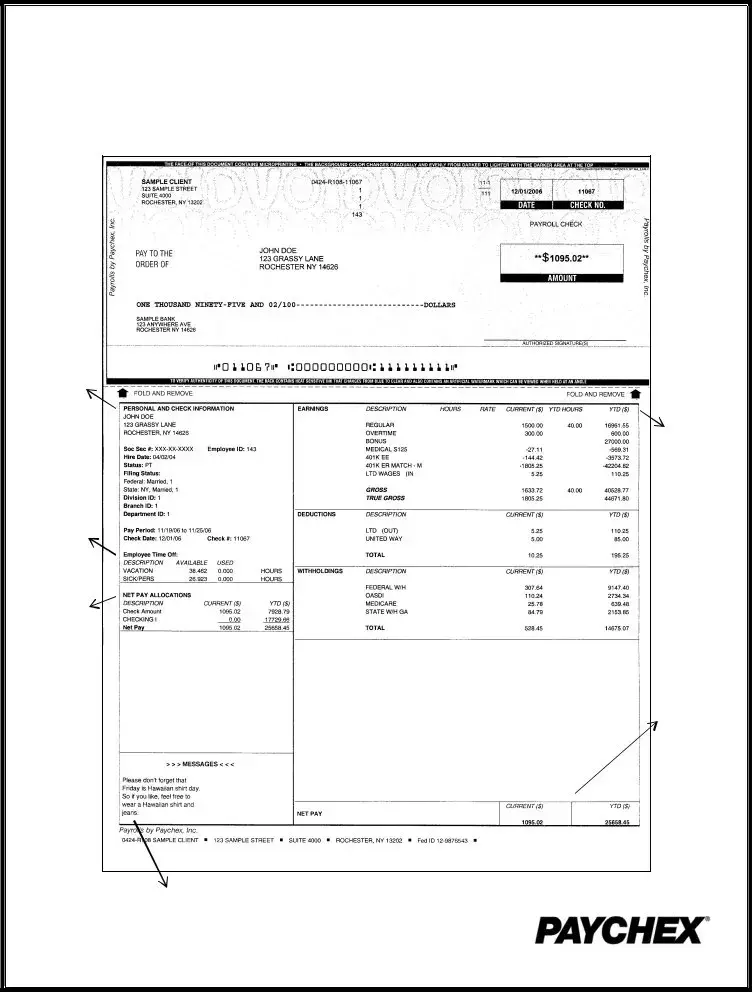What information is included on my Paychex paystub?
Your Paychex paystub includes several important pieces of information. First, it will display your personal details such as your name, address, and tax filing status. You will also see your paid time off information, showing both used and remaining time off. Additionally, your earnings, deductions, and tax withholdings are clearly outlined. The current pay period and year-to-date amounts for hours worked and dollars earned are provided to give you a complete overview of your pay.
How can I find my net pay on the paystub?
Your net pay, also known as take-home pay, is indicated prominently on the paystub. This amount is listed as the “Check Amount” if you received a physical payroll check. If you utilize Direct Deposit, the paystub will show how your net pay is distributed across your checking and savings accounts. The total net pay is the sum of all the check and Direct Deposit amounts combined.
What should I do if I notice an error on my paystub?
If you find any discrepancies on your paystub, such as incorrect earnings or deductions, it's important to address them promptly. Start by contacting your employer's payroll department. They can assist you in reviewing the payroll calculations and making any necessary corrections. Record any discrepancies and keep a copy for your records, as this can aid in resolving the issue.
Can I access my Paychex paystub online?
Yes, many employers offer online access to paystubs through the Paychex system. To access your paystub, you will typically need to log into the employee portal provided by your employer. If you're unsure how to do this, reach out to your HR department for detailed instructions on accessing your information online.
What is the significance of the year-to-date amounts on my paystub?
The year-to-date (YTD) amounts displayed on your paystub provide a cumulative summary of your earnings, deductions, and tax withholdings from the beginning of the calendar year up to the current pay period. This information is crucial for understanding your overall financial situation and can help you with tax planning and budgeting.
Are there messages from my employer included on my paystub?
Yes, your paystub may include messages from your employer. These messages can range from important updates about company policies to reminders regarding benefits enrollment and deadlines. It’s a good practice to read these messages as they may contain valuable information relevant to you.
What happens if my employer does not use Paychex for payroll?
If your employer does not use Paychex for payroll, then you will receive a paystub from whichever payroll provider they use. The format may differ, but the key information—such as your earnings, deductions, and net pay—should still be present. If you have questions about your paystub, it’s best to seek guidance from your HR department or payroll provider.
How is paid time off calculated on my paystub?
Paid time off (PTO) is calculated based on the policy set by your employer. Your paystub will show the amount of PTO you have used during the current pay period and the remaining balance. Keep in mind that the calculation of PTO can vary by company, including factors like accrual rates, carryover rules, and usage policies. Review your employer's PTO policy for further clarity.

